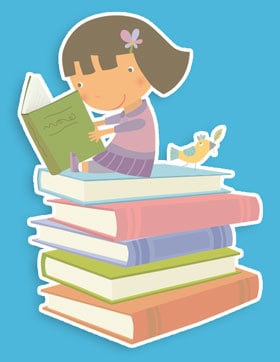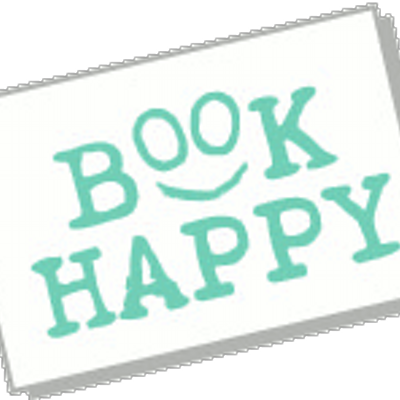There are many ways to make a storytelling area magical – and props, chairs and costumes can all add to the experience. But make sure it’s not all style over substance, say Hannah and Cate of Bookhappy. The story means everything.
What is the most important thing about a storytelling area? In short, the story! Whatever else you think should be happening in that area, the story must come first. When Springboard Stories approached us to write a piece on creating a storytelling area, we went into a veritable frenzy, discussing the types of soft furnishings that work, props you might need, the opportunities for speaking and listening that could then lead into writing and so on. But while all of the above is nice, it is vital to set the scene as an area in which stories are shared, discussed, elaborated upon, reworked, and retold – speaking and listening must come easily.
Distractions need to be kept to a minimum: if cushions are going to cause all-out war, don’t have them; quickly deal with any questions or hands-up; make sure that everyone is comfortable and don’t start until they are, even if it takes a long time! Put a ‘DO NOT DISTURB’ sign on your classroom door. Change the lighting. Change the mood. Insist on careful and attentive listening. (Remember that very young children can cleverly multitask by listening and fiddling at the same time – so don’t sweat the small stuff.) Encourage participation, questioning and discussion when it’s appropriate. Make the story mean everything.
Up close
Bookhappy storytellers always sit on the floor. Sometimes we lie on the floor. (Often we wish we’d remembered to bring cushions!) We like to be very close to the people listening to our stories. It lends a sense of intimacy, and if we are using a text, brings it, physically, very close to the listeners. We often start our sessions in a circle, then move everyone around so they are sitting facing us. How it works best for you will depend on trial and error. Ask the children how they like to sit and let them do it. If it doesn’t work, change it.
A story space
If you’re not a sitting-on-the-floor type of person, you might want to consider creating a story chair. If you have the budget, you can create amazing pieces of furniture that have their own stories. If that’s beyond your reach, you can simply find some interesting pieces of fabric for creative draping. Of course, a storytelling chair can simply be... a chair. Sometimes less is more.
Think about the physical space you have available – do you want to separate the storytelling area from the rest of your classroom with dividers or storage units, and create a type of souped-up role-play/reading area? Or would you prefer it to be an integral part of your day-to-day activities? If you are short on space, you might want to have a portable storytelling area: the children understand that on a given signal, furniture is moved, or arranged differently, and the classroom goes into storytelling mode. You could use floor spots or cushions to change the dynamic of the room, use a talking stick, or even have a costume.
During the summer months, you might want to take your storytelling activities outside. Try creating a ‘sitooterie’ (an outside sitting space), which can be as simple as a rock circle or as elaborate as a willow structure. Of course, there’s a long association of storytellers and trees, so if you’ve got a nice one, sit under it! You might want to turn it into a kind of wishing or clootie tree, with stories hanging from it, have a piece of writing rolled up in a scroll or a piece of interesting fabric on a branch, which becomes the beginning of a story.
Props: less is more!
We often use props during our storytelling activities. However, we use these as talking points before and after we’ve told the story. Too many props can be a real distraction, especially for very young children. You could have a box or trunk of items that you can use imaginatively, for example:
- Puppets
- Envelopes with questions/extracts/ pictures from stories
- Maps
- Listening devices: MP3 player, or check out Storyphones
- Dressing-up clothes
- Masks
- Boxes with clues or unusual objects inside – we call these ISPs (Inspirational Starting Points)
- Talking sticks
- Mirrors
- Felt storyboards/sequencing cards.
Exploring stories
How much or how little you want to direct activities based on the stories you have shared is entirely up to you. There’s a lot to be said for allowing the children free rein to create and tell their own stories with very little direction at all. A storytelling area, be it static or portable, is a fantastic resource for any classroom, from Nursery right through to Year 6. Its potential for creative teaching and learning is endless!
Top tips from Bookhappy
REMEMBER – we’re only one type of storyteller. There are lots of other ways to tell a story and have a BRILLIANT time.
USE YOUR FACE, voice and gesture to tell the story. Don’t be shy. Get the children to do as you do.
‘MUTTERING MOMENT’ – let the children have a brief time to talk. They might not talk about the story. Try not to worry.
ASK QUESTIONS – let the children ask questions. Let the children tell you what they know or understand from the story.
LINK IDEAS in the story to things that the children have experience of in their own lives. Link stories to other stories. Think about what connects them.
USE ACTIONS AND MOVEMENT, and let the children move too. There’s nothing more distracting than a numb bum.
SING! Linking songs and singing to stories helps children to internalise narratives. Like all good stories, storytelling sessions should have a beginning, middle and end.
PREPARE THE CHILDREN FOR LISTENING. Tell or read the story, then bring it to a close. Occasionally, leave a story thread dangling....
Hannah and Cate are book-lovers and storytellers – check out their website.














